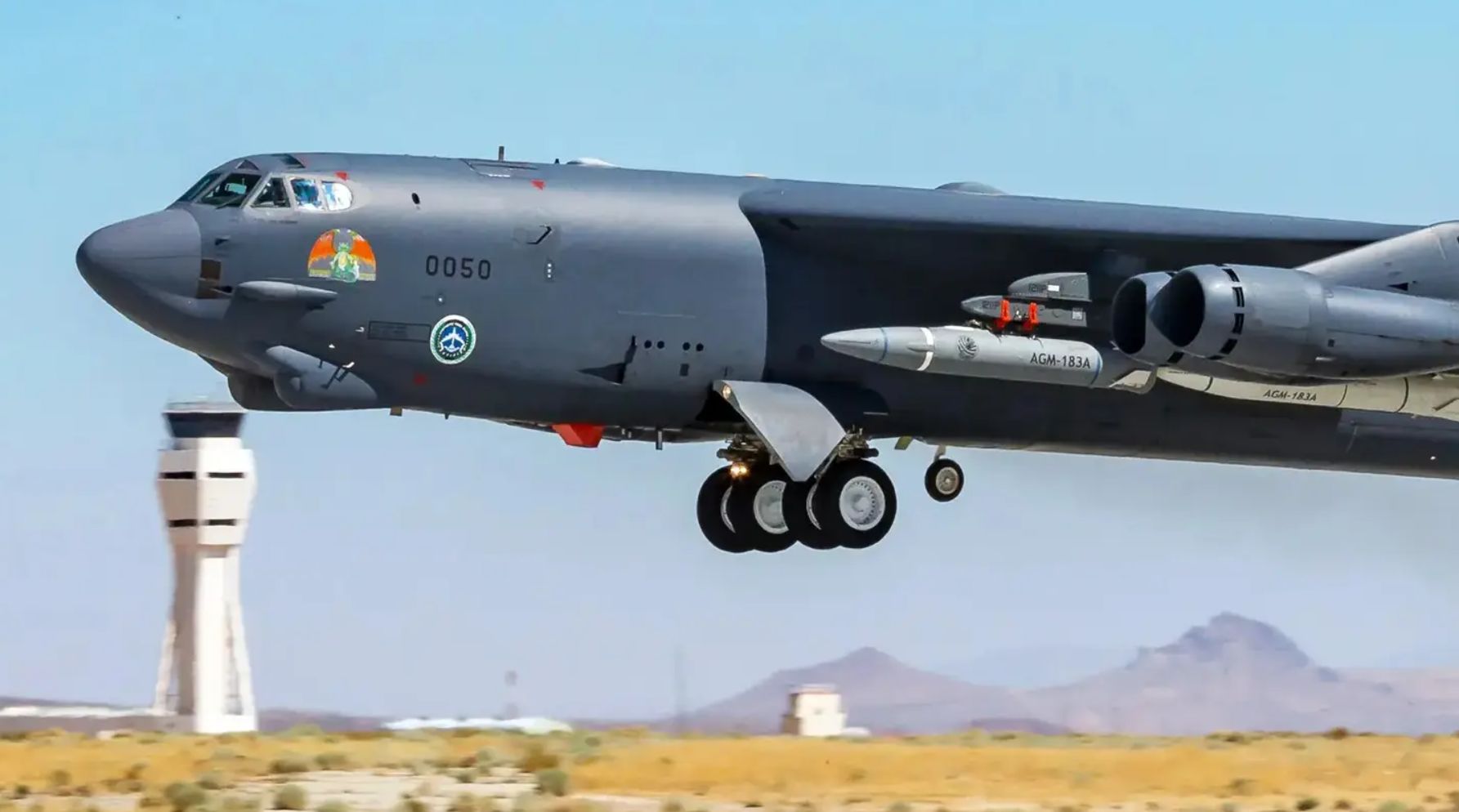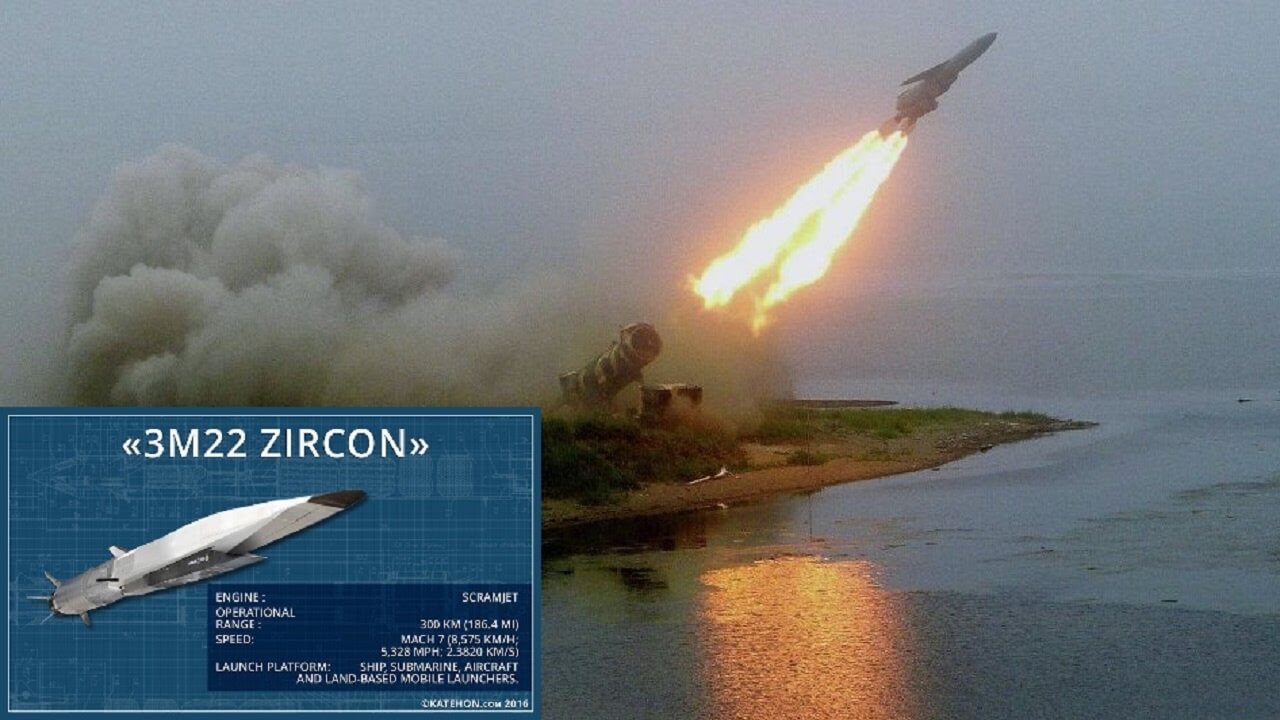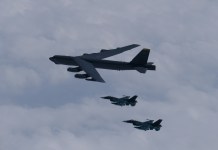After an unfortunate failed test in March this year, the US Air Force announced that it tested another prototype of its hypersonic AGM-183A Air-launched Rapid Response Weapon (ARRW) developed by Lockheed Martin over the weekend.
Conducted on August 19, the service said the test was meant for collecting data that it hopes will help it develop future weapons that can travel at greater than Mach 5. A B-52H Stratofortress discharged a fully operational prototype ARRW.
The development is intriguing, given that the ARRW’s future seems uncertain after a string of failed tests. In what was seen as a setback for the US hypersonic weapon program, the US Air Force (USAF) Acquisition chief told Congress earlier this year that the service had decided against buying the AGM-183A after the end of its prototyping phase.
The AGM-183A ARRW is a long-range hypersonic missile designed by Lockheed Martin for the USAF. Until its failed March 2023 test, the missile was expected to improve USAF’s hypersonic strike capability by allowing it to attack heavily defended, high-value targets such as enemy military bases and surface warships at stand-off ranges.
When the test failed in March, US Air Force Secretary Frank Kendall confirmed that the test involving the ARRW was unsuccessful. As for the August 19 test, the service declined to comment on its particular goals and stopped short of confirming or denying whether it thought the test was successful.
However, the Air Force claimed that it had “gained valuable new insights into the capabilities” of the ARRW and that the information would benefit the advancement of both the ARRW and the service’s other significant hypersonic weapon program Hypersonic Attack Cruise Missile (HACM).
Interestingly, the failed ARRW test in March gave rise to speculations that the service would focus on the Hypersonic Attack Cruise Missile (HACM), the other hypersonic program in the USAF kitty, even though the service did not explicitly touch on the ARRW’s scrapping. Raytheon and Northrop Grumman are developing the HACM.
The U.S. Air Force has conducted a test of the AGM-183A ARRW air-launched hypersonic missile. This was the first test since a failed launch in March.
The results of the test are not reported. pic.twitter.com/gR8aoLY8BV
— NEXTA (@nexta_tv) August 22, 2023
The USAF has been more interested in the HACM program for quite some time, intending to develop a smaller, less expensive cruise missile based on air-breathing propulsion technology. US Air Force Secretary Frank Kendall said, “We’re more committed to the HACM at this point than we are to ARRW.”
However, the spokesperson for the Air Force stated, “We are going to finish ARRW testing, then we are going to make a procurement decision, but right now, we do not have any money planned in the five-year budget for ARRW.”

Later, there were speculations that the AGM-183 AARW program may not get the funding to complete even the final few tests. As per reports in June this year, the chairman of the House Armed Services Committee (HASC), Mike Rogers, had “completely removed” the $150.3 million on “completion work” on the ARRW following such a request from the USAF itself.
“The Air Force had requested to ‘close out’ and collect data from the program, which the service has said it won’t pursue into production after a series of test failures,” a report published in Air and Space Forces said.

Although the possibility of ARRW being finally shelved shortly was seen as a hypersonic heartbreak for the US trailing behind its adversaries Russia and China in the hypersonic capability, it wasn’t wholly unexpected. The program’s demise was imminent as it suffered a series of test failures in 2021.
Even though some officials have called for ending this testing from now on, others, like Air Force acquisition chief Andrew Hunter say it must go on, at least for now. This might explain why the weapon is still being tested despite many uncertainties and skepticism.
The United States, nevertheless, continues to be desperate to develop and induct a hypersonic weapon so that it could be at par with its two adversaries with whom the possibility of a conflict is not an impossible scenario anymore.
The US Is Trying To Play Catch Up
The US places a high priority on the development of hypersonic weapons, particularly in light of developments in China and Russia. Only Beijing and Moscow possess operational hypersonic weapons impervious to interception by ordinary missile defenses. The US, on the other hand, is still trying to play catch up.
The US Department of Defense (DoD) requested US$11 billion for its long-range subsonic and hypersonic missile programs from the 2024 budget. A Commercial Solutions Opening for the Hypersonic and High-Cadence Airborne Testing Capabilities (HyCAT II) initiative was launched by the Defense Innovation Unit in January 2023 to expand its work on hypersonic technologies.
This initiative will concentrate on four areas: manufacturing and materials, communication systems and components, propulsion, and alternative navigation and control systems. The HyCAT II program will benefit from the Hypersonix DART AE.
In addition, the USAF has given Leidos a contract to work on the Mayhem Hypersonic Multi-Mission ISR and Strike UAV system. Mayhem will use a standardized payload interface, and it might also be connected to cutting-edge propulsion system designs like dual-mode ramjets and turbine-based mixed-cycle engines.
On its part, the US Army and the US Navy have their hypersonic missiles under development, i.e., the US Army’s Long Range Hypersonic Weapon (LRHW) and US Navy Conventional Prompt Strike (CPS) missile, which is being accelerated in full force so it could be operational and deployed on the Zumwalt-class frigates by 2025.
However, with ARRW becoming a bone of contention, the US Air Force is all left with is the HACM. Several officials and military experts have observed that the HACM is an air-breathing missile and, thereby, is relatively less efficient than boost-glide vehicles — a capability that China has.
In fact, besides the vaunted Chinese DF-17 hypersonic missile that was tested in 2021, creating ripples around the world, the country seems to be on its way to becoming an undisputed leader in hypersonic weapon technology with at least two more hypersonic weapons- the YJ-21 and the DF-27-emerging on the scene.
A new Chinese long-range ballistic missile with an HGV, the DF-27, with an alleged range of 5,000–8,000 kilometers, has been successfully tested, according to US intelligence assessments leaked a few months ago.
The sources also indicate that the Chinese military has already deployed the missile. Another air-launched ballistic missile with an HGV payload has also allegedly been inducted.
Besides China, another US adversary is armed to the teeth with hypersonic missile capability and has also incidentally used one of them, known as Kinzhal or Dagger, in combat against Ukraine. There were reports in July last year that Russia was developing a new Intermediate-Range Ballistic Missile (IRBM), the Zmeevik, which will have a range of around 4,000 kilometers and be equipped with an HGV.

Russia has also inducted the Tsirkon hypersonic missile in service. In January this year, Russian frigate Admiral Gorshkov armed with the Tsirkon (Zircon) hypersonic missile, set sail to travel across the Atlantic Ocean, Indian Ocean, and the Mediterranean Sea.
The Tsirkon multi-purpose hypersonic missile designed to strike sea and ground targets has a range of over 1000 kilometers and can travel at Mach 9 (11,113 kilometers per hour). Russia is also in the process of equipping its new nuclear submarines with hypersonic Tsirkon missiles.
Additionally, in December last year, the Commander of the Russian Strategic Missile Forces, Sergey Karakayev, announced that the Avangard missile system would enter service with the missile regiment of the Yasny military formation on December 17.
“Another missile regiment will be introduced into service in the Yasny military formation for the anniversary of our Strategic Missile Forces — now with the Avangard missile system,” Karakayev said on Russian TV on December 15.
Against that backdrop, the United States’ inability to field an operational hypersonic weapon does not bode well for the country that boasts of an advanced military power, especially as tensions continue to rise between Washington and its two adversaries, who are also incidentally advancing cooperation.
- Contact the author at sakshi.tiwari9555(at)gmail.com
- Follow EurAsian Times on Google News




